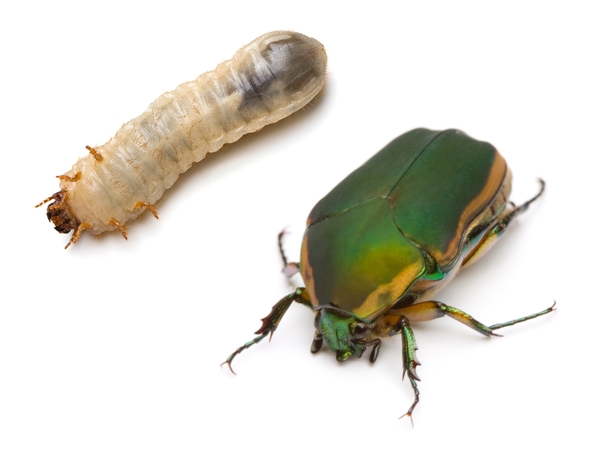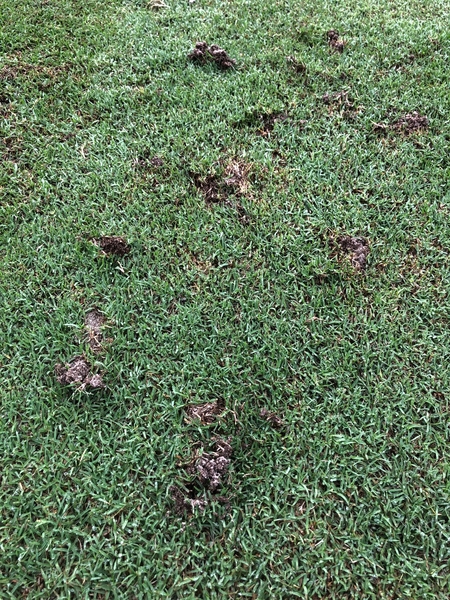Green June Beetles in Turfgrass
en Español / em Português
El inglés es el idioma de control de esta página. En la medida en que haya algún conflicto entre la traducción al inglés y la traducción, el inglés prevalece.
Al hacer clic en el enlace de traducción se activa un servicio de traducción gratuito para convertir la página al español. Al igual que con cualquier traducción por Internet, la conversión no es sensible al contexto y puede que no traduzca el texto en su significado original. NC State Extension no garantiza la exactitud del texto traducido. Por favor, tenga en cuenta que algunas aplicaciones y/o servicios pueden no funcionar como se espera cuando se traducen.
Português
Inglês é o idioma de controle desta página. Na medida que haja algum conflito entre o texto original em Inglês e a tradução, o Inglês prevalece.
Ao clicar no link de tradução, um serviço gratuito de tradução será ativado para converter a página para o Português. Como em qualquer tradução pela internet, a conversão não é sensivel ao contexto e pode não ocorrer a tradução para o significado orginal. O serviço de Extensão da Carolina do Norte (NC State Extension) não garante a exatidão do texto traduzido. Por favor, observe que algumas funções ou serviços podem não funcionar como esperado após a tradução.
English
English is the controlling language of this page. To the extent there is any conflict between the English text and the translation, English controls.
Clicking on the translation link activates a free translation service to convert the page to Spanish. As with any Internet translation, the conversion is not context-sensitive and may not translate the text to its original meaning. NC State Extension does not guarantee the accuracy of the translated text. Please note that some applications and/or services may not function as expected when translated.
Collapse ▲Description
Green June beetles (GJB), Cotinis nitida, are large, green beetles with gold-yellow wing (elytra) margins (Figure 1). The adults are clumsy fliers and often bump into people and objects as they fly around during the day. They are sometimes referred to as "June bugs" or "June beetles". GJB larvae are cream-colored, with a red-orange head capsule, three pairs of legs, a wide body, and are approximately two inches long. GJB larvae belong to the white grub pest complex but are noticeably larger than other white grub species. They are also more elongate and do not curl into the white grub characteristic "c" shape (see "White Grubs in Turf").
Biology
Green June beetles (GJB) overwinter as larvae in the soil. Adults emerge in late spring and summer and are active for several weeks. Females lay eggs in clusters of 10-30 in walnut-sized burrows in the soil, preferably in areas with high organic matter. Eggs hatch within two weeks and larvae are active for several weeks, depending on temperature. Larvae will generally stay 3-5 inches deep in the soil during the day and come up to the turf surface at night. They will crawl on the surface using their body segments and abdominal bristles to move around. Once they reach a length of two inches in the spring, following overwintering, the larvae will pupate for 2-3 weeks and then emerge as adults.
Damage
Larvae can cause direct damage to the turfgrass by feeding on plant roots and organic matter in the soil. As they tunnel to the surface, they can dislodge plants, causing mechanical stress. When they emerge, they leave quarter-sized emergence holes in the canopy. Larger larvae will create mounds of soil (Figure 2) as they burrow which can interfere with and dull mowing equipment. Excessive tunneling can weaken plants and thin crowns and thatch.
Monitoring
Soil sampling: Use either a cup cutter, shovel or sod cutter to sample a fixed area of turfgrass. If using a cup cutter or shovel, slowly break apart the soil, and examine the lower 1-3 inches (2.5-7.6 centimeters) for larvae. If using a sod cutter, roll back the turf like a mat. Slowly rake through the soil and examine for insects.
“Tug-test”: In damaged areas, grasp a small section of the turf canopy with your hand and pull upward. If the turf separates easily from the soil surface, similar to how a rug or unsecured carpet can be lifted from the floor in a house, it is a good indication of insect feeding in the crown and upper rootzones.
Control
Biological Control
Scoliid wasps are natural enemies of white grub larvae. Female wasps hover over the turf canopy where grubs are present. Females will dig through the soil to locate a grub, paralyze it once found, and lay an egg on it. When the egg hatches, the wasp larva will feed on the grub to complete development. These wasps are not aggressive and do not pose a risk to humans.
Chemical Control
Timing of insecticide application is critical for effective white grub control. For preventative control, before symptoms of damage are evident, apply neonicotinoids* or diamides before eggs are laid. These applications should be timed with peak adult flight activity. This approach should only be used in areas that have a history of grub infestations where you can predict damage is likely to occur. Curative control is more common for green June beetle management and is used when an infestation is detected. The best time to apply curative insecticides is when the grubs are small and actively feeding near the soil surface, usually August/September. Apply the appropriate insecticide as soon as you have identified the pest in order to maximize efficacy. Contact products (carbaryl) should not be watered in as you want the grubs to encounter the insecticide when they emerge and crawl around at night. Be aware that grubs will often die on the surface and it may be necessary to physically remove those grubs to prevent an accumulation of decaying, odorous grubs on the turf. A rake or shovel is usually sufficient to remove grubs. Be careful using mowing equipment for removal. Large numbers of grubs will clog mowing equipment.




